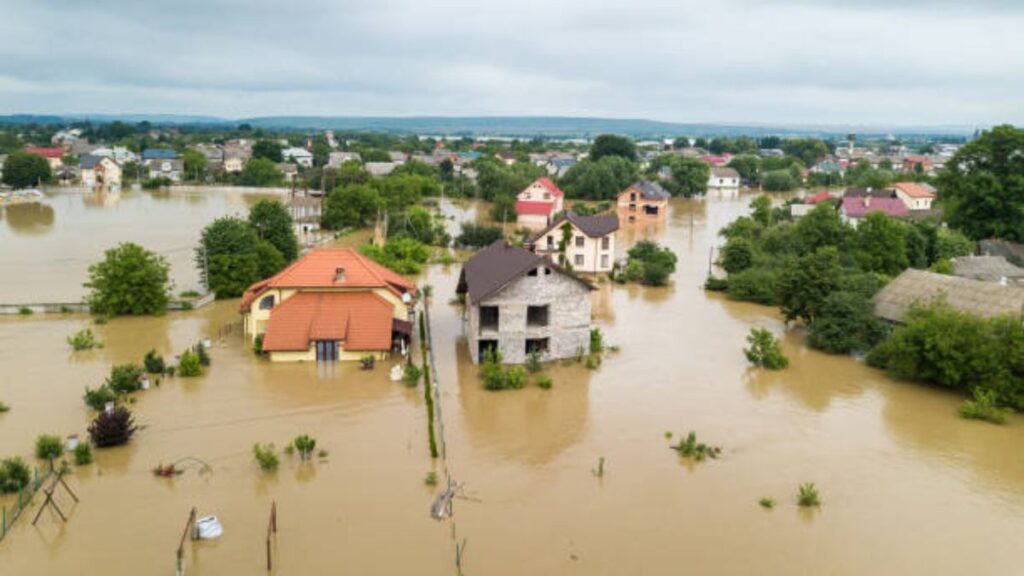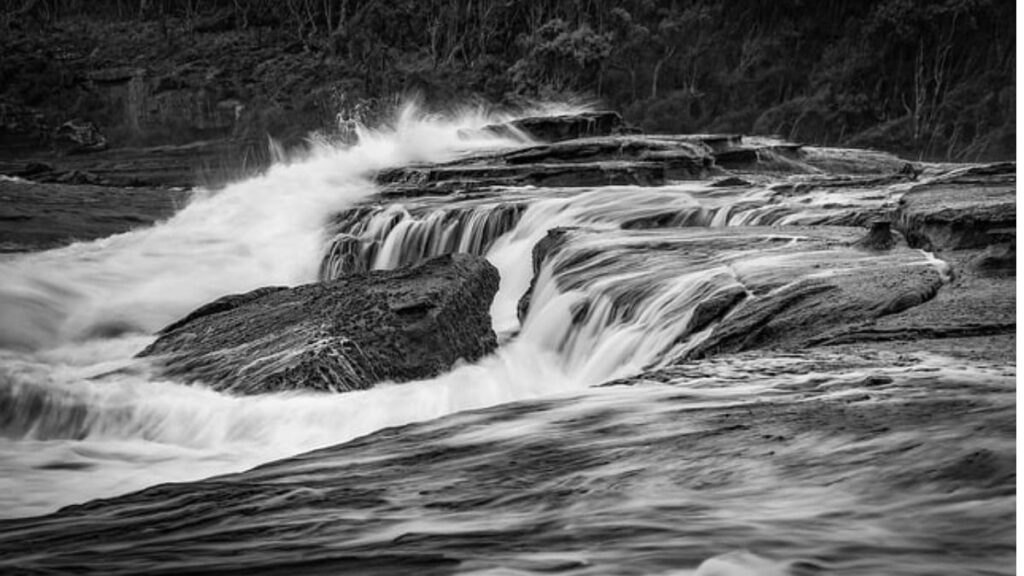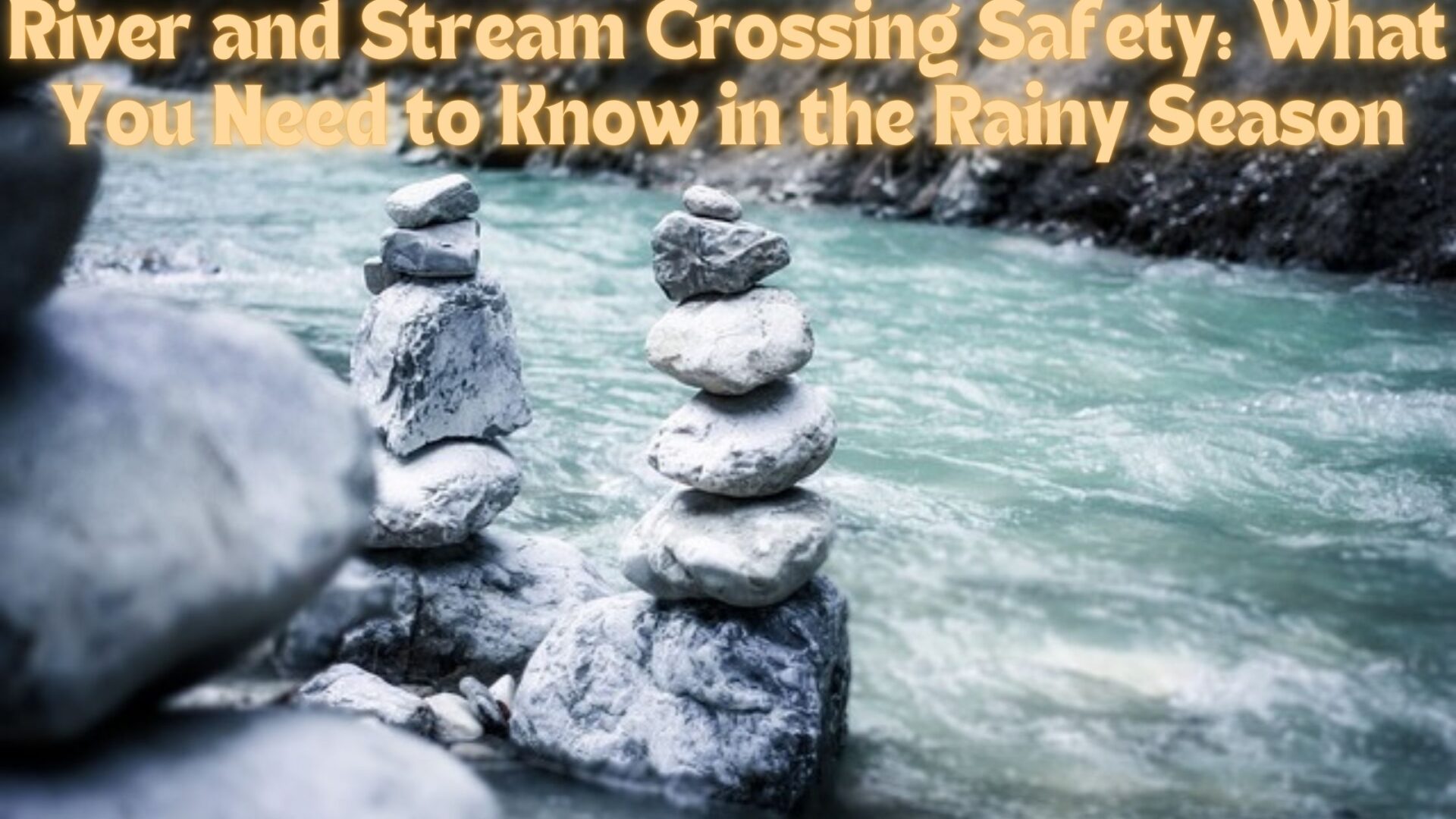Introduction:-
River and Stream Crossing Safety: What You Need to Know in the Rainy Season

In the rainy season, serene rivers and streams transform into potential threats. Navigating these water crossings safely is vital for outdoor enthusiasts venturing into the wilderness. This article investigates the potential risks and provides crucial safety advice to help you safely traverse rivers and streams during the rainy season.
Understanding the Hazards of River and Stream Crossings During Rainy Season:
- Increased Water Levels: Heavy rainfall can cause rivers and streams to rise significantly, making it more challenging to cross safely.
- Strong Currents: The influx of rainwater creates powerful currents that can easily sweep away even experienced swimmers.
- Hidden Debris: Fast-moving water carries debris such as branches and rocks, posing additional hazards.
- Reduced Visibility: Murky water conditions during rainy seasons make it difficult to see the riverbed, increasing the risk of stepping into deep holes or tripping over submerged objects.
Safety Tips for Navigating Rivers and Streams:
- Plan Ahead: Check weather forecasts and river conditions before your trip and avoid crossing if heavy rainfall is expected.
- Choose the Right Spot: Look for wider sections of the river or stream where the water is typically shallower and the current weaker. Avoid narrow and fast-moving channels.
- Use a Stick: A sturdy stick can help you gauge the depth and strength of the current and provide support while crossing.
- Unbuckle Your Backpack: In case of a fall, an unbuckled backpack can be quickly removed, preventing it from dragging you down.
- Face Upstream: Crossing upstream helps maintain balance and reduces the risk of being knocked over by the current.
- Link Arms: When crossing in a group, link arms to provide stability and support for each other.
- Move Slowly and Steadily: Avoid sudden movements that could disrupt your balance. Take small, deliberate steps.
- Wear Proper Footwear: Sturdy, non-slip footwear offers better traction on slippery riverbeds.
Emergency Measures:
- Know Your Limits: If the water appears too dangerous, trust your instincts and find an alternative route.
- Float on Your Back: If swept away, float on your back with your feet pointed downstream to protect your head from collisions.
- Signal for Help: Use a whistle or other signaling device to alert others if you’re in trouble.
Real-Life Examples and References:
- John Muir Trail Case Study: Hikers on the John Muir Trail often encounter challenging river crossings. The Sierra Club provides guidelines for safe crossing techniques.
- National Park Service’s Safety Guidelines: The NPS offers comprehensive advice on river and stream crossing safety, emphasizing preparation and caution.
How to Assess the Safety of a River Crossing
Crossing a river safely requires careful evaluation of several factors to minimize the risk of injury or being swept away by the current. Here are key points to consider:

1. Water Depth and Current Speed
- Shallow Water: Prioritize crossing areas where the water depth allows wading. If the water is below knee level, it’s generally safer to cross.
- Current Speed: Use a stick to test the current’s speed. If it moves swiftly, the current is strong and potentially hazardous. Avoid walking through water that moves faster than your normal walking pace.
2. Riverbed and Footing
- Riverbed Composition: Check the riverbed’s stability. A sandy or gravel bottom is preferable to a slippery or muddy one.
- Footing: Carefully enter the water to test the footing. Ensure the surface is not too slippery or uneven.
3. Weather and Recent Rainfall
- Weather Conditions: Avoid crossing during or after heavy rainfall, as water levels can rise quickly, and currents can become stronger.
- Rainfall Forecast: Consult the weather forecast to verify no sudden storms or heavy rains are predicted.
4. Visual and Auditory Cues
- Water Clarity: Clear water allows you to see the bottom and identify potential hazards like rocks or debris.
- Sound of the Water: A roaring sound often indicates a fast current, which can be dangerous.
5. Width of the River
- Narrow Crossings: Look for narrower sections of the river, as they are usually shallower and have slower currents.
6. Natural and Man-Made Hazards
- Obstacles: Be aware of obstacles in the water, such as rocks, fallen trees, or man-made structures, which can cause turbulence or block your path.
- Wildlife: Be cautious of wildlife, such as snakes or aggressive fish, which may inhabit the water.
7. Buddy System
- Group Crossing: If possible, cross with a companion. Two people can support each other’s balance and provide assistance if needed.
- Safety Gear: Use a rope or pole to aid balance. If in a group, form a human chain by linking arms for additional stability.
8. Entry and Exit Points:
- Clearly identify entry and exit points on both sides of the river.
- Ensure the exit point is not too steep or difficult to climb out of.
9. Floatation and Safety Devices:
- Use a floatation device or wear a life jacket if the water is deep or the current is strong.
- Use a sturdy walking stick to maintain balance and test the depth and stability of the riverbed.
10. Experience and Skill Level:
- Honestly assess your swimming ability and experience with river crossings before attempting to cross.
- Consult with locals or guides who are familiar with the river for advice on the safest crossing points.
Remember, always prioritize safety and avoid taking unnecessary risks when crossing a river. Make an informed decision based on your assessment of the factors mentioned above.
Precautions Hikers Should Take When Crossing Streams During Torrential Rainfall:
Navigating streams during heavy rain requires special precautions due to the rapidly changing conditions. Here are crucial steps hikers should take to ensure a safe crossing:

- Avoid Crossing if Possible:
- Wait for rain to stop and water levels to subside before crossing.
- Look for alternative routes, such as bridges or safer crossing points upstream or downstream.
- Assess the Stream:
- Avoid crossing if the current is too fast; use a stick to gauge speed.
- Avoid crossing if the water is above knee height, as it can be difficult to navigate safely.
- Utilize Safety Gear:
- Wear a life jacket or use a floatation device in deep water or strong currents.
- Use a sturdy stick or trekking poles for balance and to probe the riverbed.
- Ensure Secure Footing:
- Choose a crossing point with a stable riverbed, such as gravel or sand.
- Wear appropriate footwear with good grip to prevent slipping.
1. Link Arms:
- If traveling in a group, form a human chain by linking arms, boosting stability. Position the strongest person upstream to aid in breaking the current.
2. Plan the Crossing:
- Identify clear, secure entry and exit points on both sides of the stream.
- Establish an escape route downstream in case of being swept away.
3. Monitor Weather Conditions:
- Stay informed about the latest weather forecasts and warnings.
- Monitor the rain’s intensity and its impact on the stream.
4. Use a Rope:
- If available, create a safety line across the stream using a rope.
- One person crosses with the rope tied around their waist while others hold the other end.
5. Travel Light:
- Keep your backpack as lightweight as possible. A heavy pack increases difficulty and risk.
- Ensure your gear is waterproof to prevent it from becoming waterlogged and heavier.
6. Be Prepared for Emergencies:
- Carry a first aid kit and know how to use it effectively.
- Have an emergency plan in place, ensuring everyone in the group is familiar with it.
7. Communicate Effectively:
- Establish hand signals or calls to facilitate communication during the crossing, especially when the water is loud.
- Maintain close proximity, keeping the group together and within sight of each other.
By adhering to these precautions, hikers can mitigate the risks associated with crossing streams during heavy rain, enhancing their safety and enjoyment of the hiking experience.
Conclusion
Navigating waterways during the rainy season demands meticulous planning and vigilance to mitigate potential risks. By adhering to the safety measures outlined in this article, you can minimize hazards and enhance your outdoor adventure. Prioritize your well-being by assessing the conditions and opting for alternative routes if necessary.
For further insights and comprehensive guidelines, consult reputable organizations such as the Sierra Club and the National Park Service. Their resources offer valuable information to help you make informed decisions and ensure a safe and enjoyable outdoor experience.
References:
- Sierra Club: River Crossing Safety
- National Park Service: Water Crossing Guidelines








